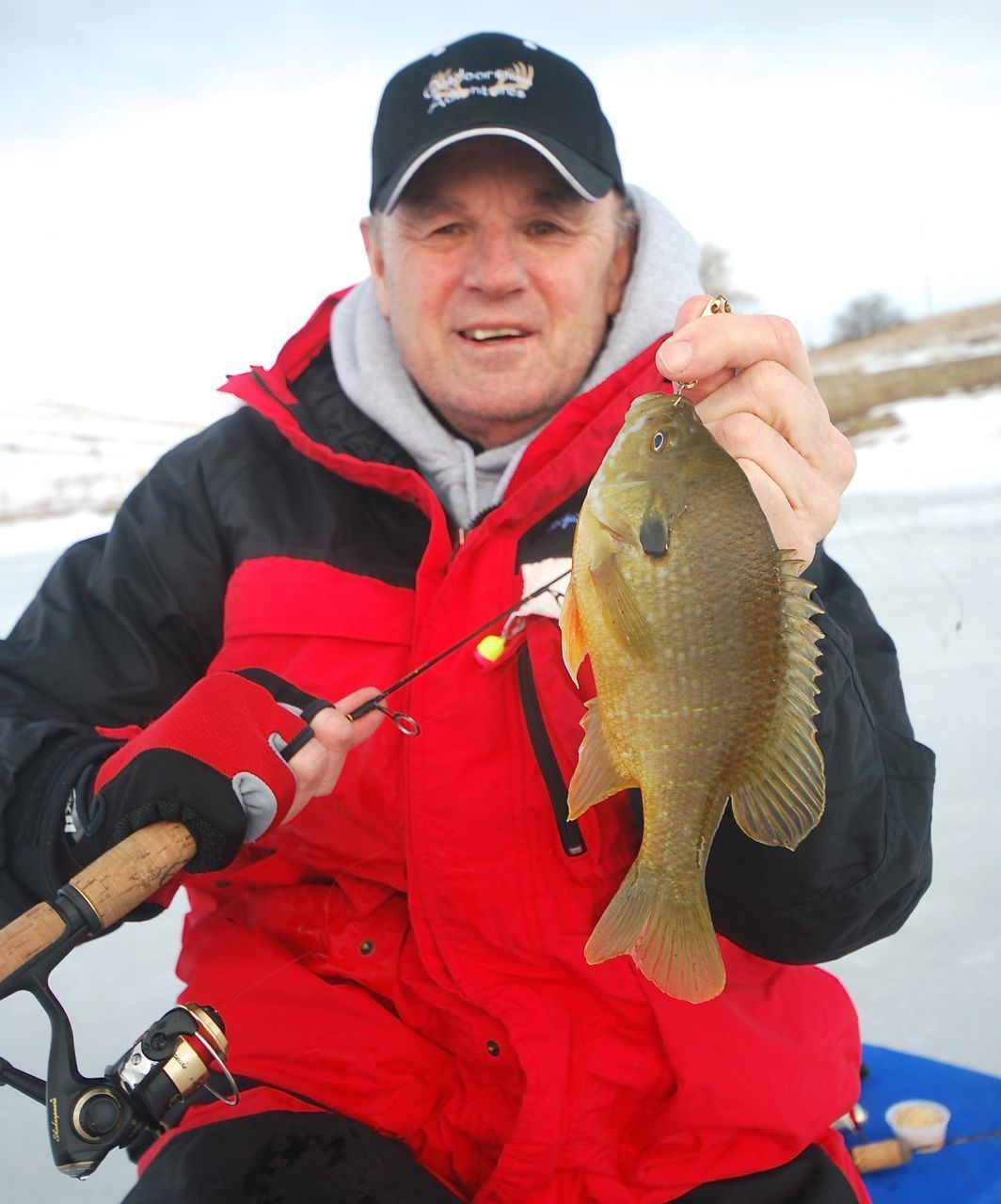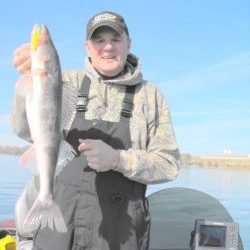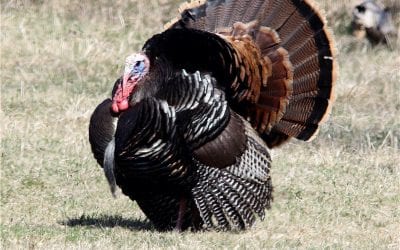Author with a nice bluegill caught during the early ice fishing season. (Larrry Myhre Photo)
According to the Minnesota DNR, new ice is usually stronger than old ice, with four inches of clear, newly formed ice may support one person on foot, while a foot or more of old, partially thawed ice may not.
Ice seldom freezes uniformly. It may be a foot thick in one location and only an inch or two just a few feet away.
Ice formed overflowing water and currents is often dangerous, and this is especially true near streams, bridges and culverts.
Also, the ice on outside river bends is usually weaker due to the undermining effects of the faster current, with insulating effect of snow slows down the freezing process The extra weight also reduces how much weight the ice sheet can support. Also, ice near shore can be weaker than ice that is farther out.
As a kid growing up in Watertown, S.D. I spent a lot of time along the Big Sioux River, exploring.
Some folks become worried when they’re on the ice and hear booming and cracking ice, thinking that the ice is unsafe, it only means that the ice is expanding and contracting with the temperature changes.
Schools of fish or flocks of waterfowl can affect the relative safety of ice, with the movement of fish bringing warm water up from the bottom of the lake.
The first time I went through the ice happened on the Sioux River when we were heading out trapping and since AJ was heavier than me, he went ahead working his way around logs and branches frozen into the ice.
AJ, had just walked around a log frozen in the ice, with me following a safe distance, and as I was going around that log, I went down, with the backpack full of traps and the only thing that kept my head above water was the twenty-two that I was carrying.
Well, the only way I could get back on the ice, would be for AJ to grab the unloaded gun, where he managed to pull me out, with the backpack and traps disappearing into the river bottom.
Below, are some tips being safe when walking on ice.
Move slowly. Dashing across ice is just asking to fall. Instead, walk slowly so your body has time to adjust to the slick surface. You’ll use less force as you move, which means you won’t get as hurt if you do fall through.
Walk with small steps. If your feet are too far apart, you’ll have trouble keeping your balance on the ice. Take a small step so your foot is only a couple of inches ahead of the other. Then, repeat with the other foot. It’ll take longer, but you’ll be much safer.
Shuffle forward. Keep your feet about a foot apart. Then, slowly shuffle one foot at a time as you walk. This boosts your center of gravity, so you can stay steady even when the surface isn’t. Picture the way penguins wade, try to mimic that as much as possible.
Stand up straight. Good posture makes a ton of difference when walking on ice. Straighten your back so it’s lined up with your legs. This helps control your balance.
Keep your arms at your sides. Moving your arms too much can make you lose your balance.
Hold on to something. Sometimes you need extra support. Trekking poles make it easier to walk over ice because they can grip the ice and help you stay balanced. If you don’t have a pole, try a cane.
To safely walk on ice, avoid black Ice, you’ll want to look for clear ice, avoid areas where snow has piled up on the ice.
By following these tips and suggestions your next trip onto the ice should be a safe one.
Gary Howey is an award-winning writer, producer, broadcaster, former tournament angler, fishing and hunting guide and in 2017 inducted into the “National Freshwater Fishing Hall of Fame”.
He developed and was the Producer-Host for 23 years of his award winning gary Howey’s Outdoorsmen Adventures television series. He’s the Host of the award-winning Outdoor Adventures radio program carried on Classic Hits 106.3, ESPN Sports Radio 1570 in Southeastern South Dakota, KWYR Country 93 AM and Magic 93 FM in Central South Dakota, As well as on KCHE 92.1 FM in Northwest Iowa. If you’re looking for more outdoor information, check out Gary Howey, originally from Watertown, S.D., now residing in Hartington, Neb., is a former tournament angler, fishing & hunting guide and an award- winning writer, producer, photographer and broadcaster and in 2017, was inducted into the “National Freshwater Fishing Hall of Fame.” For more information check out www.GaryHowey’soutdoors.com, and www.outdoorsmenadventures.com with more information on these Facebook pages, Gary Howey, Gary E Howey, Outdoor Adventure Radio, Outdoorsmen Productions and Team Outdoorsmen Productions. The Outdoor Adventures television show is available on numerous independent markets, and the MIDCO Sports Network.





0 Comments